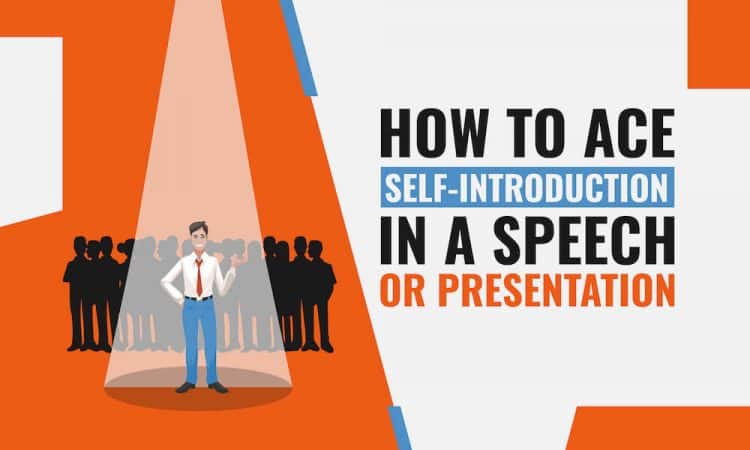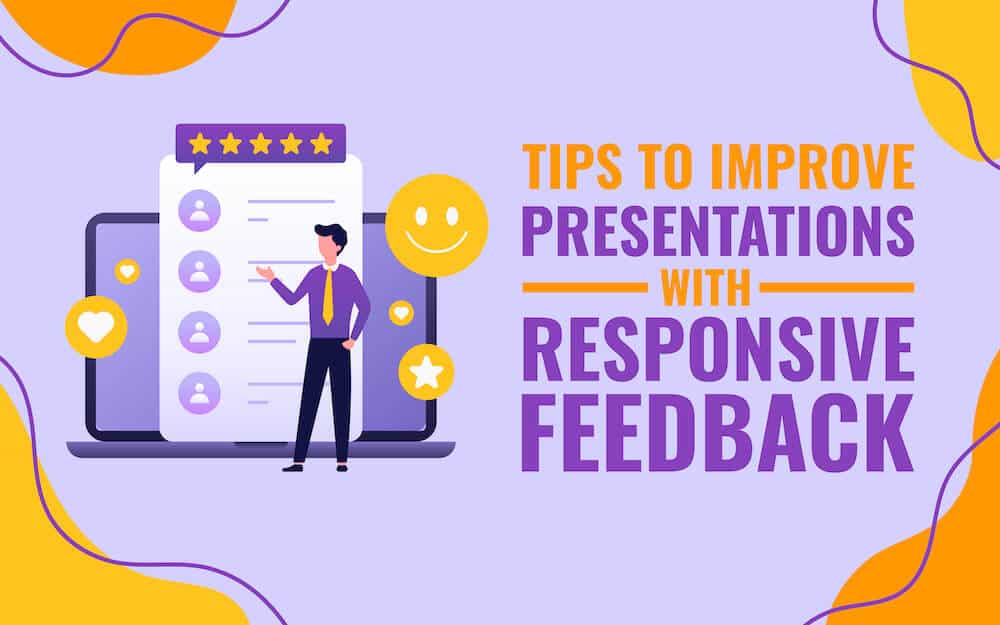
After incessant preparation, you are finally standing in front of a crowd, ready to deliver your speech or presentation. The first few seconds are incredibly crucial (you know it, too) and will set the tone for your talk eventually.
Why?
These are the moments where you can create a good first impression and give people a chance to judge whether your speech is worth listening to or not.
And you begin.
“Hello everyone; my name is X. I am a research analyst for a company called Y. I have a doctoral degree in Z and pursued my master degree in certain subjects. My professional licenses and apprenticeships include ..”
And before you know it – your speech has become a lullaby for the audience.
Feels painful, right?
The reason why you need a solid introduction is – to interest people in your speech and intrigue them toward your personal brand and expertise (a proper introduction will let everyone know of your skillset and prowess).
If you want to perfect your introduction and make your way towards a successful delivery, you have come to the right place.
Let’s learn how.
What is Self-Introduction?
It is simply introducing yourself to another person or group. Self-introduction is generally done when you don’t have a third party to introduce you. The process involves sharing information that helps people get an idea of who you are.
The goal is to give everyone a small teaser of your talk and what value you will bring to people. It is just to let everyone know why the talk is worth their attention.
Why is it Important?
- It is a quick and easy way to start a conversation.
- An intro will serve as an icebreaker as people get to know you a little bit.
- It is an opportunity to share your educational qualification, skill set, knowledge base, past accomplishments, experience, interests, etc. It helps people get a peek into your personality.
- A compelling introduction will not only woo people at that moment but also engage and interest them enough for your entire speech.
- A self-introduction before your keynote speech or presentation will also establish authority and credibility for you.
Things to Avoid
- Your introduction shouldn’t be an extended CV recital.
- Don’t divulge a lot of information about what’s coming next in the presentation or give too much context to the speech.
- Avoid bragging. Share things that are true and authentic.
- Don’t go for an impromptu self-introduction. Like the other parts of your presentation and speech, your introduction should be well-rehearsed, too.
- Keep your introduction natural and normal. Don’t try anything fancy that takes you off the track. To learn better, you can also take note of how a colleague, emcee, or friend introduced themselves.
10 Interesting Ways to Introduce Yourself
The way you introduce yourself can make your presentation either flat or unforgettable.
Here are some tips to make your self-introduction unique.
1. State Your Name and Background
Don’t overstretch it, but this is the most preferred way for presenters. Give a brief introduction by stating information like name, organization, designation, and other facts. Make sure to mention credentials that are audience-focused.
Your audience expects something from your presentation or keynote speech, and knowing that beforehand will help you highlight key credentials relevant to people and your speech.
For example – Greetings all. I am Mark Jacobs working for Microsoft for 10 years.
2. Try a Personal Tagline
Just the way brands have taglines to create and increase product awareness, people have personal taglines, too. Taglines are catchphrases to let people know the value a brand or person can offer.
Create a catchy tagline that best describes your strengths, skills, values, passion, and achievements. Choose the best keyword that defines you, create a line around that, and remember to keep it short.
For example – I am a go-getter, other people’s success inspires me, I believe there is no word like failure, etc.
3. An Elevator Pitch Approach
Try to model your introduction around an elevator pitch. As the name suggests, elevator pitches are short (30 seconds or less), succinct, and comprise goal-oriented and critical information.
The format will help you compile your strengths, skills, and capabilities in a catchy and engaging way. Also, add a hook line to reel in everyone’s attention.
For example – Hello, I’m Mark, an environmentalist at 4ocean. Since the environment is something that affects us all, I want to bring to your notice (problem and interesting statistics).
The great part about working at the company is that we have been able to find a solution, and in fact, we’re the only ones who have (USP). Let’s create a safe world for all (CTA).
4. Share Something Not Too Common
You can tell people some lesser-known facts about yourself or something that makes you stand out from the crowd. Sharing your USP that amplifies your expertise on the subject will help establish authority and credibility as a speaker.
For example – As an activist, I have had the privilege to work on saving all major rainforests of the world. It gave me deep insight into the issues we face today and what measures should be taken to correct them.
5. Start with a Quote That Describes You the Best
Quotes are relatable and widely liked. You can use them in introductions to convey your strongest suit or belief. You can start with a quote and expand upon it, explaining how it reflects your personality.
For example – You are what you think (Alfred Bester). The quote describes my personality to a very large extent.
6. Anecdotes and Stories
Anecdotes are a great way to take people on your journey. You can give everyone a peek into challenges you faced, how you overcame things, etc., forging a human connection.
Knowing your audience and their pain points will help you share relevant stories that can instantly click with people. You can also infuse your introduction with some vivid imagery to spark curiosity and interest.
For example – “Greetings all (basic introduction). In my time working for the United Nations, I had an opportunity to be a part of the Kyoto Protocol. My journey took me through ..”
7. Recent Developments
You can also connect recent news and developments in your introduction to appear relevant and convey timeliness. It will help put across your personality as someone who is connected and affected by their surroundings and geared up to play their part in the larger puzzle.
For example – “Hello everyone (basic introduction). Maybe you are aware of the recent wildfire that occurred in the nearby county. One of the primary causes was habitat destruction, which brings us to our topic of today ..”
8. Pose a Question
Starting with a question is another effective tactic to make your introduction interesting. You can pose rhetorical questions or elicit a response. A thought-provoking question can make people think and participate in the speech.
It is also one of the great ways to bring liveliness and engagement among your audience.
For example – Hi all, my name is X. Before going further, I would like you all to answer a question. How many of you have experienced the service?
9. Make Humorous Confessions
Another way you can start a catchy introduction is by including a funny confession in your speech. It will lighten up the atmosphere and make people smile. Humor is a natural icebreaker and immediately connects people.
You might look young in your experience or too old and present in front of a young crowd. These kinds of humorous remarks can help you immediately forge a connection with everyone around you.
For example – Hello everyone, let me confess something funny. The excitement and nervousness of presenting in front of you all fine people today made me put on my shirt backward.
10. Try Something Different
You can try something different and unexpected rather than going for a straight self-introduction. Ask a few people from the audience to speak up. Enquire what they wish to learn from the session and then respond with how you plan to take care of that within the speech.
For example – Can you please tell us your name and profession? Are you affected by the environmental woes directly?
In a Nutshell
The introduction is the first few moments of your speech or presentation. It is bound to give you jitters, especially when the pressure is to make people instantly like you.
Introductions serve as an opportunity to build the needed bridge between the presenter and the people. Go for a well-rehearsed, succinct, and catchy introduction to make your mark. You can also take the help of pre-designed self intro presentation template to showcase your self-introduction in an impactful manner.
Use the tips mentioned above to ace your speech right from the moment you set foot on the stage.



